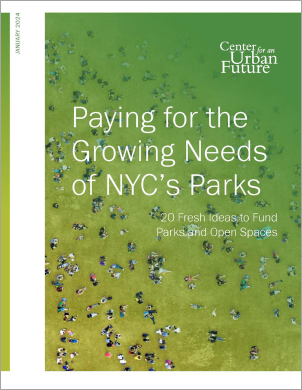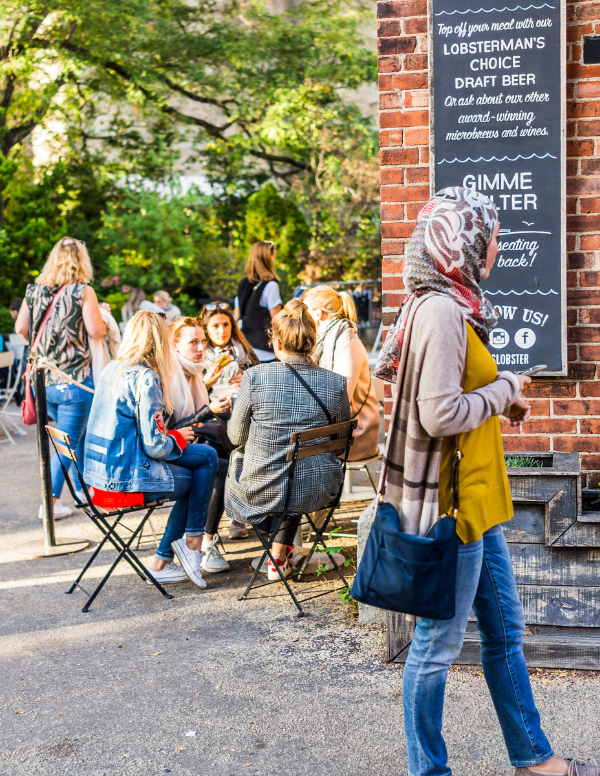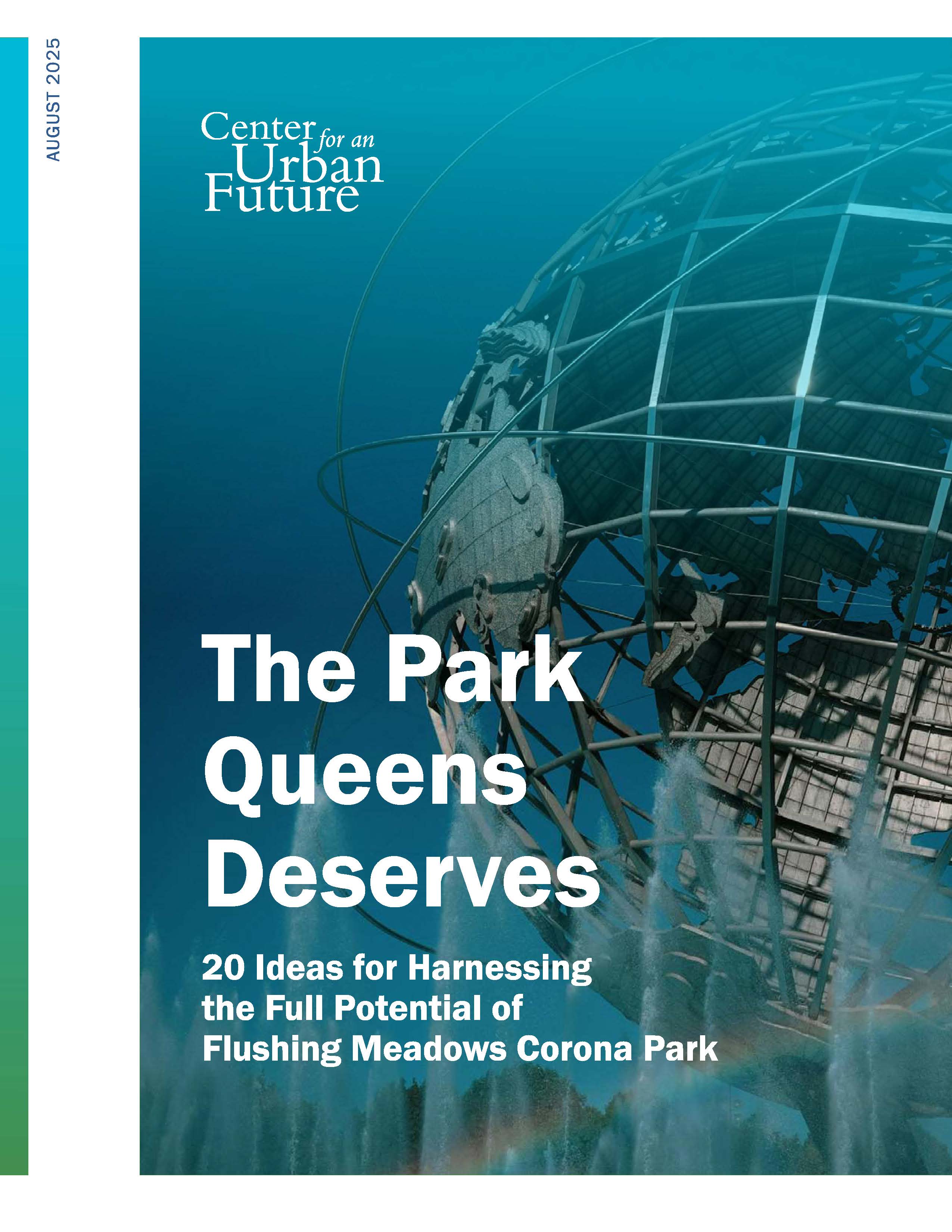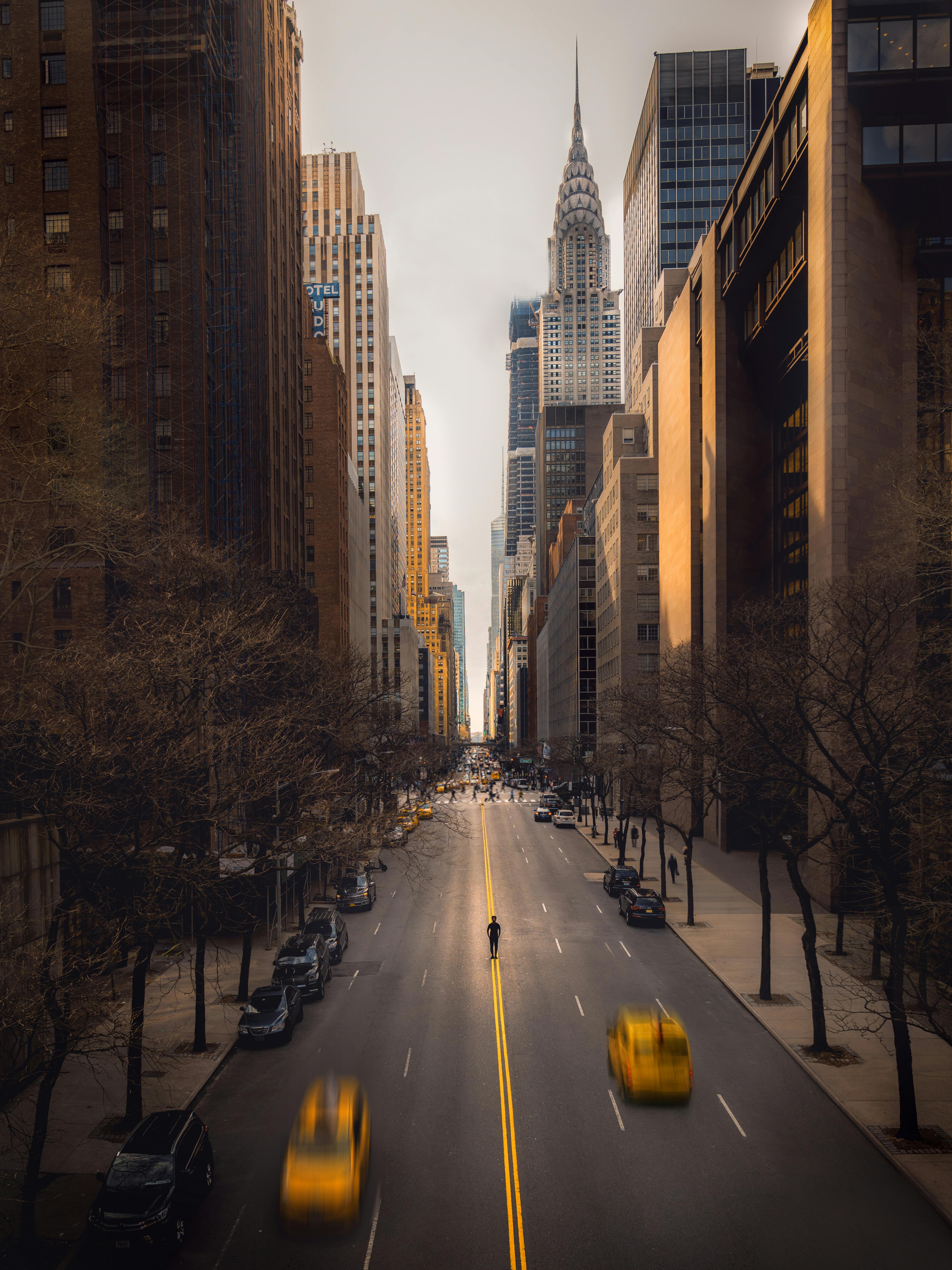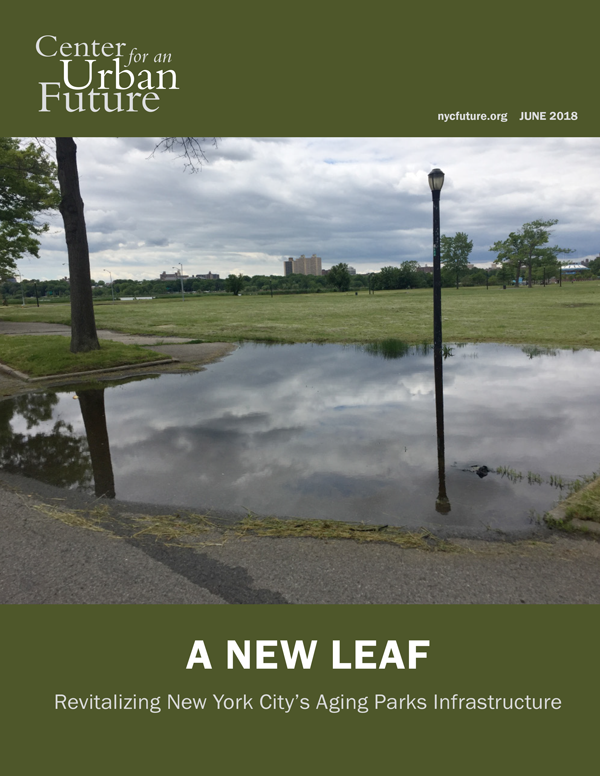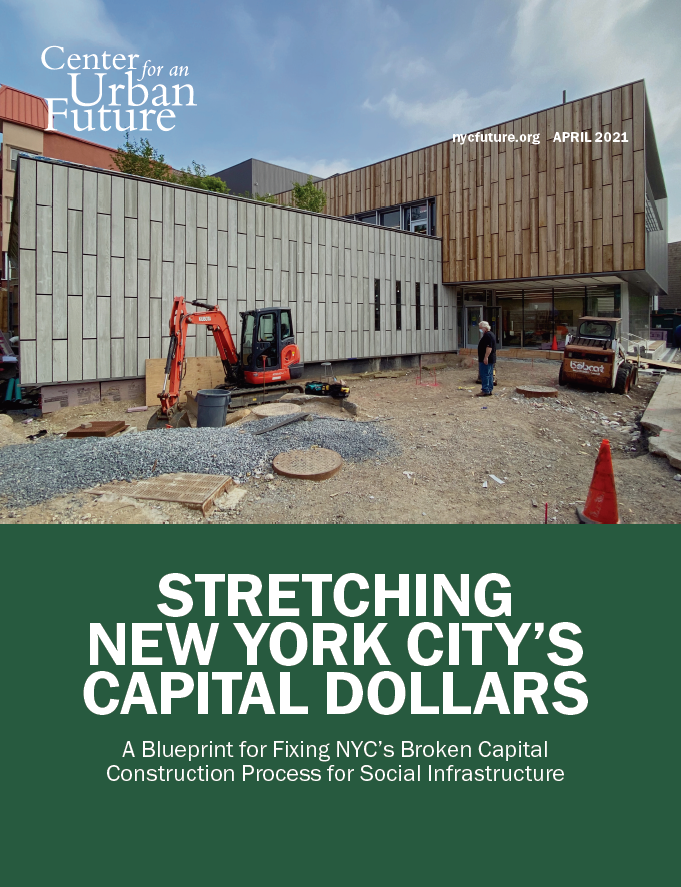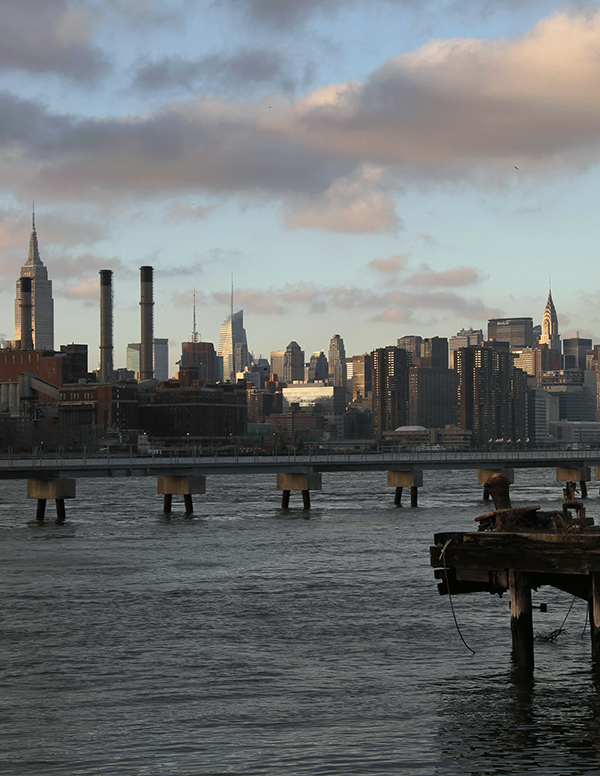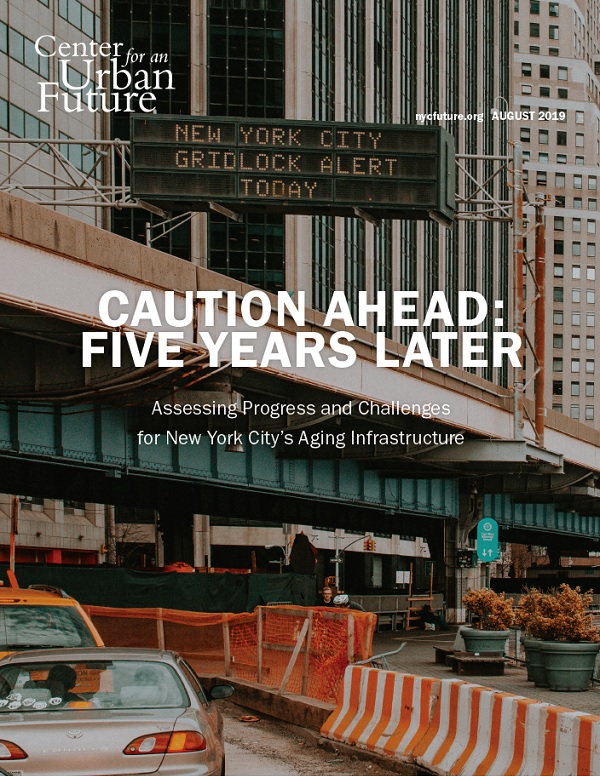New York City is at the precipice of a public space renaissance. The Covid-19 pandemic ushered in record levels of usership to parks and plazas, which have not receded since. Central Park once again welcomed over 42 million visitors in 2022.1 Attendance at Riverbank State Park, in upper Manhattan, nearly doubled from 1.9 million in 2021 to over 3 million in 2022.2 New public space programs, like Open Streets and Dining Out NYC, have reimagined the city’s streets and commercial corridors, while providing a vital economic boost. And the lasting shift toward hybrid work is bringing more residents outdoors closer to home.
The cities that will prosper in the years ahead are those that boast an exceptional quality of life, and great open spaces are essential to that goal. Yet despite this widespread consensus, there is virtually no agreement on perhaps the most pressing question facing New York City’s parks and open space today: how to pay for their growing maintenance and infrastructure needs, while investing in critically important new parks and open spaces in the places they’re needed the most.
Keeping pace with the needs of the city’s 30,000 acres of parks and natural areas has proven to be a thorny long-term challenge. The Department of Parks and Recreation’s headcount has fallen 38 percent since the mid-1970s, leading to chronic shortages of dedicated maintenance workers, including gardeners, plumbers, masons, and electricians.3 Budget cuts enacted in 2020 led parks conditions to deteriorate to the worst levels in 20 years.4 While conditions have rebounded since then, new cuts of 5 percent in November 2023, followed by the potential for two more 5 percent cuts in 2024, are raising fears that this cycle is poised to continue. Last year, the system’s major maintenance needs topped $58.9 million, with just 16 percent of those needs being met.5
New York City’s parks maintenance challenges compound deeper infrastructure issues that have only grown over time. The parks system faces at least $685 million in capital needs just to bring existing infrastructure up to a state of good repair, with just 30 percent of those needs either underway or planned over the next three years.6 Even as some of the most concerning needs are largely invisible until they fail completely—from deteriorated retaining walls and bulkheads to damaged drainage systems—other challenges are evident in parks across the city. Too many parks and playgrounds experience flooding during an ordinary rainfall, water fountains and bathrooms fall into disrepair, trees go years without inspection and pruning, and invasive species outcompete native plants. Meanwhile, despite laudable efforts at improvement in recent years, many of the city’s recreation centers, field houses, and community centers are in a state of disrepair, the result of decades of underinvestment.
In addition to these pervasive maintenance and infrastructure needs, New York City also has work to do to expand access to parks and open space in the first place. While the city has made important progress since 2021, more than 16 percent of New York City residents do not live within a quarter-mile walk of a small park or half-mile of a large park. Neighborhoods furthest from any park include parts of: South Richmond Hill, Maspeth, and Rosedale in Queens; Wakefield in the Bronx, and Flatbush in Brooklyn.7
Earlier this year, Mayor Eric Adams took an important step toward addressing the city’s growing open space needs when he committed $375 million in new parks and plazas, widened sidewalks, safer intersections, and expanded bike lanes.8 The mayor also appointed New York’s first-ever “chief public realm officer” to helm the interagency effort to support open spaces across the five boroughs.9 But considerably more dedicated funding will be needed in the years ahead to keep pace with their plethora of needs. During his campaign in 2021, Mayor Adams admirably pledged to devote at least one percent of the city’s budget to parks. (Currently, it’s about 0.65 percent.)10 But with the city confronting billions of dollars in emergency expenses from the recent migrant influx while seeing revenue growth slow, it’s far from certain that the parks budget will reach this level of funding in the foreseeable future.
The time is long overdue for city leaders to get creative and seek out new sustainable sources of funding for parks. This report puts forth 20 concrete and achievable ideas to pay for the city’s growing park needs, as New York charts a post-pandemic future, combats the climate crisis, and continues to build a more equitable city. This report includes the following high-priority ideas:
Create new, dedicated revenue streams for parks. Even as New York City generates more than $79 billion in revenue annually, there is currently no stream of revenue solely dedicated to parks. This report proposes several new mechanisms for generating revenue—including a small surcharge on all stadium and arena tickets, the creation of new fees on gas-powered landscaping and stormwater management, new programs to monetize organic waste including fallen trees, and a voluntary contribution from hotel guests—that would help the parks system catch up on maintenance while providing greater predictability around budget planning.
Launch a modest expansion of restaurants, cafes, and other concessions in parks that enhance the visitor experience while generating funding for parks citywide. There are surprisingly few restaurants, cafes, ice cream shops, and other concessions in parks across the five boroughs. Where these concessions do exist, like the Shake Shack in Madison Square Park, the Breads Bakery in Bryant Park, the Le Pain Quotidien next to Sheep’s Meadow in Central Park and the seasonal Fornino pizza restaurant on Pier 6 in Brooklyn Bridge Park, they invariably enhance the experience of parkgoers.
Restaurants and cafes are also a fixture of many of the most adored parks in Paris, London, and numerous other cities. For instance, Water Works Park in Minneapolis is home to Owamni, an award-winning restaurant serving indigenous cuisine by Sioux chef Sean Sherman. A modest expansion of these use—and creative new ones, like year-round spas in existing pool houses—could make New York’s parks even more appealing while providing much-needed revenues for parks. Indeed, while concessions are NYC Parks’ largest source of revenue, concessions revenue has flatlined just above $42 million for more than a decade—and has declined 25 percent since 2012, after adjusting for inflation.11
Establish an 80-20 split for all future revenue from new parks concessions. The larger share (80 percent) would remain with the park hosting the new concession and the remainder (20 percent) allocated to a fund to support parks with the greatest needs, in particular those in less affluent communities that may not otherwise be able to support revenue-generating concessions. While we recommend a measured expansion of concessions in city parks, the revenues from these new concessions should stay with parks—and not get funneled into the city’s general fund, as the lion’s share of existing parks concessions do right now. This can be accomplished by leveraging the existing conservancy model, in which concessionaires enter a contract with a nonprofit intermediary that retains a significant share of the revenues.
Develop new opportunities for individual New Yorkers and companies to support parks. The pandemic unleashed a powerful desire among New Yorkers to get involved with their local green spaces, but it’s often difficult for individuals and companies to contribute beyond occasional volunteer hours—especially in support of parks without existing conservancies or alliances. Launching new and expanded revenue-generating initiatives, like thoughtful corporate sponsorship of parks assets, expanded private support for fundraising initiatives focused on equity like the NYC Green Fund, and a supercharged citywide street tree conservancy, would enable the city to better tap into New Yorkers’ generosity toward their public parks and support green spaces across all five boroughs.
Tap state funding for city parks to a greater extent than has been the case and take full advantage of the recently passed Environmental Bond Act. It’s not the city’s responsibility alone to address the ever-increasing needs of its parks and playgrounds. New York City accounts for roughly 40 percent of the state’s population, but too often fails to receive its fair share of funding from Albany for parks and open spaces. In addition to maximizing funding from the state’s Environmental Protection Fund and the Regional Economic Development Councils (REDCs), city officials should work closely with the city’s Albany delegation to go after resources from the $4.2 billion Environmental Bond Act to support parks and greenways.
Take full advantage of the Inflation Reduction Act and the Bipartisan Infrastructure Law. Taken together, these two recently enacted laws comprise the largest federal investment in urban green spaces in decades. City leaders should pull out all the stops to ensure New York City gets a significant piece of this multi-billion-dollar effort, and leverage city capital dollars to achieve the maximum benefit.
This report, made possible with a grant from the NYC Green Fund, presents a menu of fiscal options to policymakers looking to generate sustainable and sufficient funding to address the full scope of parks’ needs across New York City. It was informed by interviews with over 50 fiscal and budget experts and parks advocates; roundtable discussions with the city’s leading conservancies, volunteer park groups, and park organizations across the country, in conjunction with The High Line Network; and extensive data research. While feasibility and projected earnings may vary, the ideas in this report present policymakers with practical and effective options for funding the city’s parks and open spaces now and for years to come.
20 Fresh Ideas to Fund Parks and Open Spaces
Generate New Revenue Streams for Parks Infrastructure and Maintenance
- Attach a 50 cent or $1 surcharge on arena and stadium events to support parks maintenance.
- Implement a stormwater fee and allocate the revenue to parks.
- Create new mechanisms for private developers to support parks maintenance and creation.
- Add a ‘community parks fee’ to the real property transfer tax.
- Scale up the infrastructure necessary to monetize the reuse of organic waste.
- Solicit contribution during hotel stays for a new ‘NYC Parks and Cultural Fund.’
- Charge for gas-powered landscaping and use revenue to fund composting.
Boost Concession Revenues While Ensuring Parks Benefit
- Open 10 more restaurants and 10 new destination concessions in parks by 2030.
- Work with the private sector to activate underutilized properties for concessions.
- Levy a fee on for-profit events in parks dedicated to parks maintenance.
- Attach a new surcharge to city marinas and golf courses for parks infrastructure.
- Ensure that NYC Parks holds onto more new revenues earned in parks.
Enable New Yorkers to Directly Support Their Parks
- Allow NYC Parks to fundraise through membership programs and special events.
- Make it easier for private entities to care for, maintain, and fund parks.
- Revamp the merchandise strategy for NYC Parks.
- Launch a citywide conservancy for street tree planting and maintenance.
Leverage State Funding for NYC Parks
- Boost New York City’s share of state-level parks and open space funding.
- Harness the Environmental Bond Act and cap-and-invest program to build parks and open spaces in underserved NYC communities.
Maximize Federal Funding for NYC Parks
- Create a matching fund for federal climate and infrastructure dollars.
- Tap innovative federal funding streams that can benefit NYC’s parks—but rarely do.
Click here to read the full report diving into 20 concrete and actionable ideas to pay for New York City's growing park needs.
Endnotes
- Central Park Conservancy, “Central Park Conservancy Annual Report 2022,” https://assets.centralparknyc.org/media/documents/AnnualReport_Inside_2022_Digital.pdf
- New York State Office of Parks, Recreation and Historic Preservation, “Parks Attendance Summary CY 2003- 2022,” Ny.gov, https://www.ny.gov/sites/default/files/2023-02/ParksAttendanceSummary_CY_2003-2022.pdf
- Center for an Urban Future, June 2017, “A New Leaf: Revitalizing New York City’s Aging Parks Infrastructure,” https://nycfuture.org/pdf/CUF_A_New_Leaf_.pdf.
- New Yorkers for Parks, March 2022, “Testimony to City Council on the NYC Parks Preliminary Budget,” https://www.ny4p.org/news/testimony-to-city-council-on-the-nyc-parks-preliminary-budget.
- The City of New York Office of Management and Budget, Fiscal Year 2023, “Asset Information Management Sys- tems (AIMS) Report - Agent Reconciliation” https://www.nyc.gov/assets/omb/downloads/pdf/as07-23.pdf
- Ibid. endnote #5
- Equity NYC, “Walking Distance to a Park (2017-2022)” https://equity.nyc.gov/domains/core-infrastructure-and-environment/new-yorkersliving-within-walking-distance-of-a-park
- NYC Officer of the Mayor, February 2023, “Mayor Adams Appoints Ya-Ting Liu As NYC’s First-Ever Chief Public Realm Officer,” https://www.nyc.gov/office-of-the-mayor/news/115-23/mayor-adams-appoints-ya-ting-liu-nyc-s-first-ever-chief-public-realm-officer
- Ibid. endnote #8
- Independent Budget Office, June 2023, ”One Percent for Parks? A Historical and Current Overview of the Parks Budget.” https://www.ibo.nyc.ny.us/iboreports/one-percent-for-parks-a-historical-and-current-overview-of-the-parks-budget-june-2023.pdf
- “Report on the Fiscal 2024 Preliminary Plan and the Fiscal 2023 Preliminary Mayor’s Management Report for the Department of Parks and Recreation,” New York City Council Finance Division, March 22, 2023, https://council.nyc.gov/budget/wp-content/uploads/sites/54/2023/03/Parks-1.pdf

